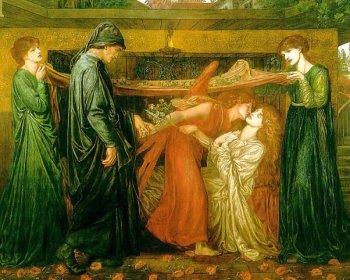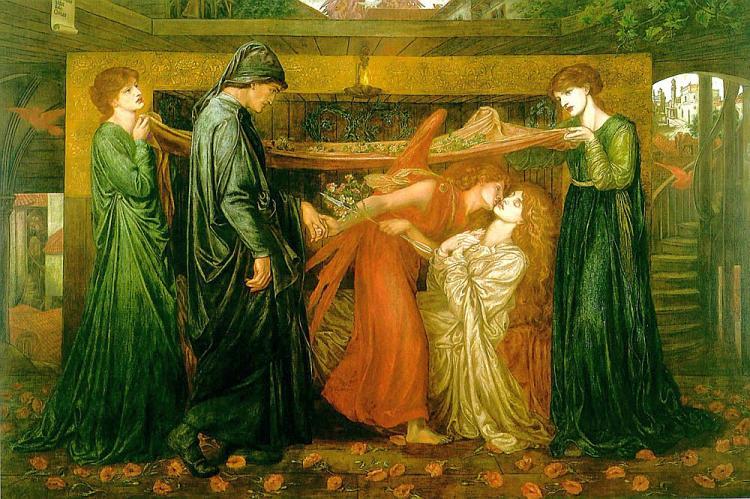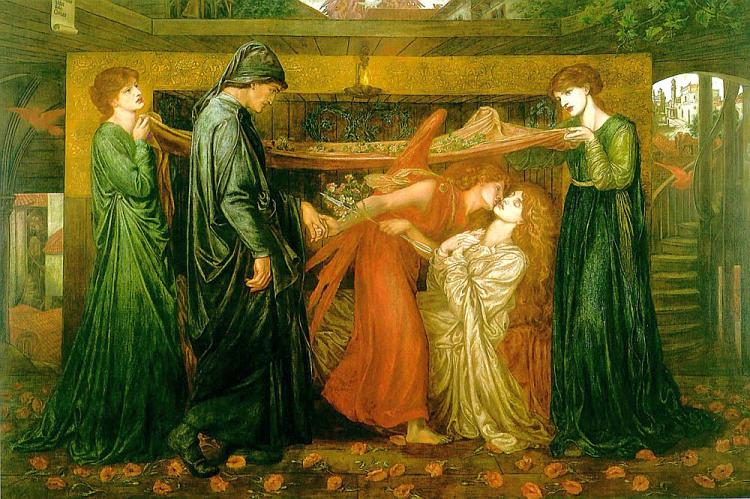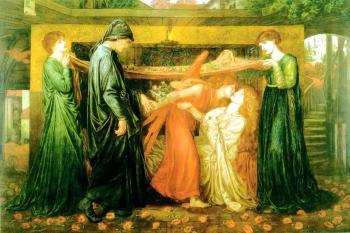Dante Gabriel Rossetti’s largest painting depicts Dante’s unrequited love in a quintessential example of the Pre-Raphaelite style.
Rossetti, possibly Dante’s greatest fan, completed Dante’s Dream at the Death of Beatrice in 1871. Dante Aligheri is bestknown for his Divine Comedy, considered a literary masterpiece of the Italian language and world literature.
Known as “il Sommo Poeta” (“the Supreme Poet”), he was also famous for his autobiographic work La Vita Nuova, and it is the following stanza from this work upon which the English painter based his painting.
In this stanza, Dante tells how in a dream he was led by a personification of Love to the deathbed of his beloved Beatrice. Dante actually met Beatrice only twice in his life. However, he writes that it was her purity that struck him so deeply and caused him to fall hopelessly in love with her. Dante practised his courtship the medieval way – subtly and behind the scenes. He admired Beatrice from afar and idolized her in his writings.
Rossetti, possibly Dante’s greatest fan, completed Dante’s Dream at the Death of Beatrice in 1871. Dante Aligheri is bestknown for his Divine Comedy, considered a literary masterpiece of the Italian language and world literature.
Known as “il Sommo Poeta” (“the Supreme Poet”), he was also famous for his autobiographic work La Vita Nuova, and it is the following stanza from this work upon which the English painter based his painting.
Then Love said: “Now shall all
things be made clear:
Come and behold our lady where
she lies.”
These ‘wildering fantasies
Then carried me to see my lady
dead.
Even as I there was led,
Her ladies with a veil were covering
her
And with her was such a very
humbleness
That she appeared to say, “I am
at peace.”
things be made clear:
Come and behold our lady where
she lies.”
These ‘wildering fantasies
Then carried me to see my lady
dead.
Even as I there was led,
Her ladies with a veil were covering
her
And with her was such a very
humbleness
That she appeared to say, “I am
at peace.”
In this stanza, Dante tells how in a dream he was led by a personification of Love to the deathbed of his beloved Beatrice. Dante actually met Beatrice only twice in his life. However, he writes that it was her purity that struck him so deeply and caused him to fall hopelessly in love with her. Dante practised his courtship the medieval way – subtly and behind the scenes. He admired Beatrice from afar and idolized her in his writings.




